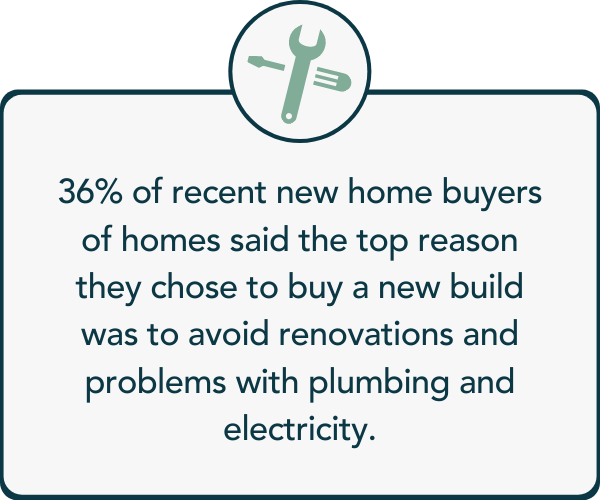The Skilled Labor Shortage
2022 Spring Market Snapshot
Explore trends and solutions available to real estate players this spring
Take one look at NAR’s newsroom, and the trends and challenges within the real estate industry may seem straightforward—yet the causes and solutions are more difficult to define.
Some of the questions we face as the spring market kicks off are:
- What will inventory look like this spring?
- As mortgage rates begin to rise, how will this impact housing affordability?
- What are the biggest challenges agents will face this spring?
We’ll dive into all of this and more with our spring 2022 snapshot, featuring insights and predictions from real estate professionals and industry experts. So, buckle up, and let’s discuss how agents can address and overcome challenges to make real estate move this spring!
Trends, challenges, and underlying causes
Low inventory
In November, NAR’s Chief Economist, Lawrence Yun, shared his prediction that more inventory would open up as the mortgage forbearance program came to a conclusion and many homeowners needed to sell. But since, the program has been extended, making it possible for homeowners facing financial repercussions from the COVID-19 pandemic to stay in their homes. As a result, predicting what inventory will look like this spring becomes much more challenging. Of course, there are other factors affecting inventory. Housing starts were up in 2021, and fear of the coronavirus seems to be having less of an effect on homeowners’ willingness to sell (at least compared to the height of the pandemic). While we had hoped to see a significant uptick in inventory, we’ll inevitably be facing another lower-inventory market this spring.

Housing affordability
In the past 20 years, the median cost of a house has increased by over 400% (Source: FRED). In that same time, the typical down payment has gone from 20% to 13%, and the median age of first-time buyers went from 29 to 33. Prominent publications have been saying, for years, that it’s becoming more and more challenging to buy a home, especially for younger populations and first-time home buyers. Unfortunately, this spring, the significant amount required for competitive down payments, combined with inflation and low inventory, all come together to create a perfect storm for first-time home buyers.
The decline in housing affordability is largely a symptom of low inventory. A shortage of homes has caused a significant spike in housing prices, and multiple listing offers are still prevalent across many US markets. This gives a massive advantage to investors and the wealthy, who can afford to present all-cash offers. Buyers offering cash is up from 19% in January 2021 to 27% in 2022. Investor activity has also increased, making up 22% of transactions compared to 15% last year. The result? Yun says, “first-time buyers have essentially zero chance against cash buyers.” (Source: NPR)
Of course, the price of purchasing a home isn’t the only factor that goes into being able to afford a home. One element that’s often overlooked, especially among first-time homebuyers, is the cost of owning a home. From utilities and HOA fees to maintenance and repairs, the costs of owning a home add up quickly. With many recent home buyers waiving contingencies to put forth competitive offers, the cost of owning homes will likely increase as new homeowners face more repairs and renovations after closing.
Making sure homes are repaired and renovated before listing is one way that agents can help both sellers and buyers. Doing so allows sellers to earn top dollar for their homes, one of life’s most significant investments. Pre-listing improvements also help meet the needs of buyers looking for the sense of control that comes with buying a brand-new home.
Cost of construction labor and goods
With homeowners continuing to spend significantly more time at home, demand for home improvements remains high. This spreads the availability of home improvement goods and services thin. Lack of construction labor and materials is one of the historical and current factors fueling the inventory shortage. The solution is two-pronged. On one side, we’ll need to develop more houses to fit the needs of our growing population. On the other side, we’ll need to put resources into improving our existing, outdated housing stock to fit the needs of today’s homeowners.
Environmental impact
There are increasing concerns about how the environmental footprint of our homes is impacting climate. With climate as a focus for both national and international governments, prominent players within the housing industry are working to understand how changes within our homes can have a positive, or at least less negative, impact on climate. Earlier this year, the NAR released its inaugural ESG+R Sustainability Report. Redfin’s CEO is passionate about getting homeowners to think about how climate change will affect their current and future living states and how they can be part of the solution instead of part of the problem.
Paying attention to the materials we use in our homes and improving (rather than tearing down) existing homes are two key ways to offset housing’s environmental impact.
Shifting consumer behavior
While consumer behavior isn’t a symptom of the housing market, it certainly has tremendous effects on the housing industry. In its 2022 Consumer Trends report, Mintel highlighted consumers’ desires for a sense of control, flexible spaces, and ways to mitigate their environmental impact. We’ve touched on environmental impact, and now, we’ll explore how desire for control and flexible spaces impact the housing industry.
A sense of control
In times of uncertainty, it’s natural for consumers to crave a sense of control. You’ve likely heard a woeful tale from a recent renter-turned-homeowner about how they didn’t prepare for one of their appliances to break ten days after moving in. The costs of repairs and renovations scare people enough that the top reason buyers choose to buy a new home (over a previously owned home) is to avoid renovations and problems with plumbing and electricity (Source: NAR’s 2021 Profile of Home Buyers and Sellers).
Buyers who can’t afford a new build, or who want some of the charm that comes with an older home, are seeking homes that are move-in ready, and free of visual imperfections. This is one of the reasons why real estate concierge programs exist today. Aging housing stock wasn’t meeting the demands of today’s buyers, but smart, pre-listing updates manage to meet the needs of both buyers and sellers.

Flexible spaces
People across the country (and the world) are adjusting to a new way of life at home. Homeowners and buyers are looking for spaces to fit their individual needs—from working to practicing yoga. This means that, when selling, staging the extra space in the living room, den, and any other flexible spaces, will highlight how the home will fit buyers’ needs.
The solutions – tools to help agents, buyers, and sellers
There are a lot of challenges that players within the real estate market will face this spring, with the primary being inventory. Unfortunately, no magic button will help us instantly renovate old housing stock, build new homes, and solve for housing affordability. Luckily, millions of dollars have been poured into the PropTech industry to develop solutions for the trends and challenges we face today:
- How can sellers be sure they’ll find the right home to move into after selling their current?
- How can buyers compete as they face another, likely grueling, seller’s market?
- How can we better meet the demands of today’s buyers?
- How can agents compete to win listings with inventory remaining low?
Let’s explore some of the solutions that have been developed to help solve for these questions and challenges.
Power Buyer Programs
Power buyers offer cash backing or buy-before-you-sell services. Some of them also provide sale-leaseback and rent-to-own options. Lastly, they are working to eliminate other barriers to purchase, including appraisal gaps.
For Agents: Power buyers help you provide more options and services to your buyers and sellers. They allow you to level the playing field for your buyers and give your sellers more control over the home selling and purchasing process.
For Buyers: The purpose of power buyers is specifically to help empower buyers, so the connection is clear. Specifically, power buyers can help level the playing field for buyers hoping to compete against all-cash offers from investors and wealthier purchasers. Cash backing and other power buyer programs may very well be the keys to making homeownership accessible to all buyers.
For Sellers: It’s no secret that it’s a seller’s market, so why aren’t more homeowners selling? Many fear that, if they sell, they won’t be able to find their next home. That’s where power buyers come in. The ability to buy your next home before you sell your current helps sellers maintain a sense of control, enabling agents to open up more inventory.

Concierge Programs
Real estate concierge is generally understood to be a pre-listing service which helps sellers get their homes ready for market. Concierge programs usually include financial assistance for some level of home improvement or staging to help properties appeal to a broad set of buyers and sell for a higher price.


For Agents: Pre-sale repairs and renovations aren’t a novel concept. Agents have been advising sellers on ways to update their homes to better appeal to buyers for decades. Historically, agents have faced hesitance toward pre-listing updates from sellers due to lack of time to complete improvement projects, heightened stress from DIYing or managing a series of contractors, and hesitance due to cash availability.
When agents work with Curbio, each of these hindrances (and more) are addressed to provide a seamless way for agents and their clients to get listings market ready. Our pre-sale home improvement model makes it possible for any seller to take on any repairs and renovations necessary to achieve their home sale goals. We’ve streamlined the process with quick estimates, immediate availability of best-in-class contractors, and high-quality, popular materials to ensure you can get to market as quickly as possible.
We take the worry away by providing a dedicated Project Manager for your project, who will see to every detail, from contract to closing. Your Project Manager will provide constant communication every step of the way via the Curbio app—so you’re never left wondering what’s going on or if the project is on track.
For Buyers: While Americans thoroughly enjoy watching shows featuring fixer-uppers, according to our study, 77% of buyers want move-in ready homes. An overwhelming majority of buyers want a modern, move-in ready home that’s already equipped to fit their tastes and needs. The desire for a move-in ready home is not only due to a desire for convenience, but also a desire for control. As mentioned previously, the uncertainty from the past few years has caused a craving for control among consumers. Knowing that a home has a new roof, new appliances, and has been repaired by a reputable contractor with a one-year warranty (like Curbio), gives buyers peace of mind. Knowing that the chances of experiencing surprise costs are low, makes it easier for new home buyers to plan out their finances.

For Sellers: The spirit behind concierge programs is to provide a solution for sellers to prep their homes for market, and the benefits are clear. With Curbio, real estate moves faster. We’ve strengthened our project management with user-friendly tech and our Home Improvement Consultants focus on home improvements that add value for buyers. This helps us to complete projects faster than the average general contractor and complete updates that result in fewer days on the market.

3D Video Tours
In 2021, 95% of home buyers used the internet during their home buying journey. For 41%, looking at properties online was the first step in their process. The importance of the internet in buying and selling real estate is no surprise. As the real estate industry shifts to meet digital demands, the importance of digital curb appeal continues to rise. 3D video tours are an excellent way to boost digital curb appeal and move real estate faster.
For Agents: Good photography and 3D tours will elevate your listing, get you more views, and help save you time. It’s easier to understand what a home looks like and how it flows by walking through it virtually. This gives you a higher chance of limiting showing requests to serious buyers.
For Buyers: Photos provide a lot of information but don’t always give buyers a sense of the home’s layout. Online listings play a significant role in the home search process, and 3D tours make narrowing in on the right home, without wasting time on countless visits, easy.
For Sellers: 3D tours not only help elevate listings and attract more buyers, they also decrease the number of non-serious buyers requesting showings.
The summary here is that there’s an onslaught of new tools and services available to help agents, buyers, and sellers. As an agent, you need to position yourself as the best resource for your clients. This means that understanding how all the trends and players in real estate may present challenges to your transactions, educating your clients on their options, and catering your service to fit each client’s specific needs will be what wins you listings and referrals in 2022.
Start here
Adding Curbio’s pre-listing home improvement solution to your suite of services is easy. Here are three simple steps to winning more listings by standing out with Curbio:
Have a listing?
Get started by requesting a free estimate for any pre-listing project—from repairs & touch-ups to whole-home makeovers.
Win listings
Modern, savvy agents are using Curbio to win listings. Download the Agent Marketing Toolkit for everything you need to share Curbio with your sphere.
Learn more
Watch the Curbio Overview Webinar to learn everything you need to know about Curbio and see how you can get started!


